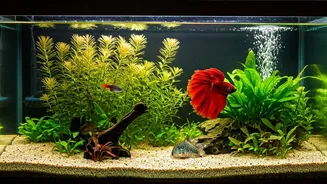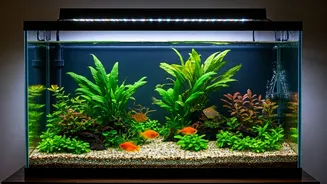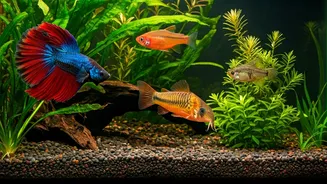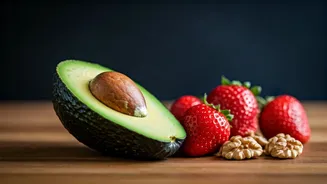Neon Tetra Elegance
Neon Tetras are among the most popular choices for beginner aquarists, and for good reason. Their striking appearance, with a vibrant blue stripe and a red
tail, adds a splash of color to any aquarium. These small, peaceful fish thrive in schools, creating a mesmerizing display as they swim together. They typically grow to about 1.5 inches in length. Maintaining a suitable environment for Neon Tetras involves replicating their natural habitat. This includes a well-planted tank with plenty of hiding places, such as driftwood and plants, to make them feel secure. Ensure the water parameters are correct with a temperature between 72-78°F (22-26°C) and a slightly acidic pH (around 6.0-7.0). Regular water changes are also crucial to maintain water quality and prevent stress. Neon Tetras are adaptable eaters, accepting flake food, but they benefit from a varied diet that includes occasional live or frozen foods, such as brine shrimp or bloodworms, to enhance their color and health.
Guppies: Colorful Charm
Guppies, also known as millionfish, are renowned for their vibrant colors, ease of care, and ability to breed. They come in a multitude of colors and patterns, providing a dynamic visual appeal to any aquarium. These small, resilient fish are livebearers, meaning they give birth to live young, making them particularly fascinating for beginners who may witness the cycle of life. Guppies are adaptable to a range of water conditions. They thrive in temperatures between 72-82°F (22-28°C) and a slightly alkaline pH (around 7.0-7.5). Despite their hardiness, maintaining water quality is essential. Regular water changes and a properly sized filter are key to keeping them healthy. Guppies are omnivores and are not picky eaters. High-quality flake food should be the staple, but supplementing with occasional treats like brine shrimp, bloodworms, and vegetable flakes boosts their health. Breeding guppies is relatively easy, so it's wise to consider the implications if you have both males and females in the same tank.
Betta Fish (Siamese Fighting Fish)
Betta fish, or Siamese fighting fish, are striking with their flowing fins and bright colors. They are a popular choice due to their unique beauty and relatively simple care requirements. It is important to remember that male Bettas are solitary creatures and should not be housed with other male Bettas, as they will fight. Betta fish require a warm, well-maintained aquarium with a temperature between 76-82°F (24-28°C). Bettas prefer a slightly acidic to neutral pH (6.5-7.0). They can thrive in smaller tanks (at least 5 gallons) as long as the water is kept clean with regular partial water changes. Because Bettas have labyrinth organs that allow them to breathe air from the surface, the tank shouldn't be too deep or have a strong current, as it can make it difficult for them to reach the surface. Bettas are carnivores; a diet of high-quality betta pellets forms the base of their diet. Supplement with frozen or live foods, such as bloodworms, brine shrimp, and daphnia, to keep them vibrant and healthy.
Corydoras Catfish
Corydoras catfish, often called Corys, are friendly, bottom-dwelling fish known for their peaceful temperament and ability to keep the aquarium clean. Corys come in various species, each with unique patterns and colors. They often add a charming aesthetic to any aquarium. They typically grow to a small size. Corys are social fish and should be kept in groups of at least three to five individuals, as they feel more secure in numbers. They thrive in a tank with a sandy substrate as they enjoy sifting through the substrate in search of food. The ideal water temperature for Corys is between 72-78°F (22-26°C), with a pH of around 6.0-7.0. They are not very demanding fish, but regular water changes are crucial to prevent health issues. Corys are omnivores and will accept sinking pellets, flake food, and live or frozen food like bloodworms and brine shrimp. They help to maintain the cleanliness of the tank by eating leftover food at the bottom.
Platies: Hardy and Social
Platies are another excellent choice for beginners due to their hardiness and friendly nature. Available in various colors and patterns, these livebearers add a splash of variety to any aquarium. These fish are relatively small. They are adaptable to different water conditions. A temperature between 70-80°F (21-27°C) and a slightly alkaline pH (around 7.0-8.0) is suitable for them. They are social creatures and thrive in a community tank with other peaceful fish. Platies enjoy a well-planted tank. Maintain good water quality with regular water changes and a properly sized filter. They are not very picky eaters, consuming a flake food staple. They will also benefit from supplements such as brine shrimp or daphnia. Platies are prolific breeders, making for easy and engaging observations. Keeping both males and females is an easy way to experience the lifecycle in the aquarium.











